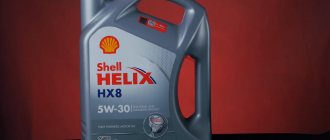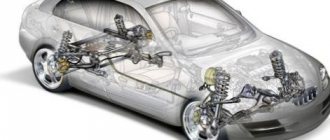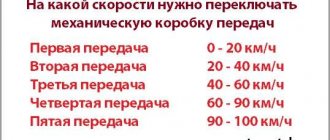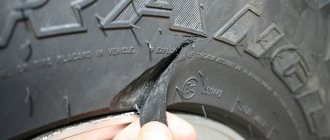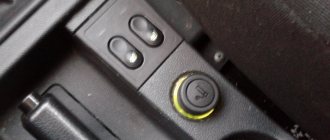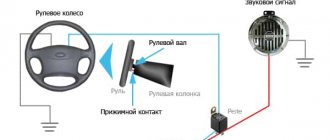For some motorists, the question of how to distinguish a tubeless tire from a tubed one is still relevant.
Let’s say right away that interest is mainly shown by owners of older cars, or those who started driving 20-30 years ago. The first chamber system is interesting, since it makes little sense to install something particularly advanced on a well-used “classic”. The latter simply do not trust the new slopes, believing that the previous chamber ones were more reliable and easier to repair. Among the curious are new owners of newly purchased used cars. The car must be shod with the same tires; this becomes known to everyone at the stage of acquiring a license.
Changing all the wheels at once may not be part of your plans; Having gone broke on buying a car, many people postpone investing in new tires for the distant future. So there is an urgent need to find out what is on the rims? There are certain ways to distinguish a tubeless tire from a tubed one. However, first you need to be aware of their fundamental differences, since at first glance they are almost identical, but the prices are noticeably different.
How to distinguish a tubeless tire from a tubed one? Learning to do it by eye
For some motorists, the question of how to distinguish a tubeless tire from a tubed one is still relevant.
Let’s say right away that interest is mainly shown by owners of older cars, or those who started driving 20-30 years ago. The first chamber system is interesting, since it makes little sense to install something particularly advanced on a well-used “classic”. The latter simply do not trust the new slopes, believing that the previous chamber ones were more reliable and easier to repair. Among the curious are new owners of newly purchased used cars. The car must be shod with the same tires; this becomes known to everyone at the stage of acquiring a license.
Changing all the wheels at once may not be part of your plans; Having gone broke on buying a car, many people postpone investing in new tires for the distant future. So there is an urgent need to find out what is on the rims?
There are certain ways to distinguish a tubeless tire from a tubed one. However, first you need to be aware of their fundamental differences, since at first glance they are almost identical, but the prices are noticeably different.
A little theory
The main difference between a camera and a tubeless camera is its structure. The first type of tires consists of 2 parts: a tire and a tube embedded in it, which is a rubber tube closed into a continuous ring. The tubeless ramp is a monolith. The outer circle along the sides is sealed with a layer of sealing, the inner circle is sealed with a spray coating that is not permeable to air. The fit of tubeless on the rims is more than tight, which is ensured by the special configuration, shape of the bead and smaller diameter in comparison with the same parameter of the rims.
Such design features provide many advantages in operation.
- In tubeless skates, the pressure inside is much more stable compared to their tubed predecessors. This manifests itself in the form of better stability, and in the form of fairly high obedience to the steering wheel;
- The main advantage of tubeless tires is their safety
. Having hit a nail with your wheel, you, of course, get a hole in the slope, but it does not burst and begins to poison the air little by little. The driver, even at high speed, has enough time to react and brake - the car continues to maintain controllability;
- Minor damage in the absence of a spare tire can be driven to the nearest tire shop. Yes, you will have to pump up the tire every 5-10 km, but you will be able to hold out for help;
- Minor integrity violations can be eliminated on the spot by carrying a tube of special sealant in the trunk.
- The durability of tubeless tires exceeds the service life of tube-type tires by about 20%;
- The apparent disadvantage of tubeless tubes - in some cases the impossibility of self-restoration - is not an argument.
Nowadays, tire shops are located along the roads almost every kilometer, and vulcanization is not so expensive that a person who managed to buy (and maintain!) a car could not pay for a one-time elimination of the consequences of a collision with a sharp object.
The combination of these benefits has led to the fact that tubeless skates have greatly displaced the archaic variety on all fronts. Nowadays, to find a camera, you will have to make some effort and spend time, they turned out to be so little in demand.
Tips on how to distinguish visually
It is doubtful to assume that when purchasing a car tire seller would slip a tubed tire instead of a tubeless one, unless at the personal request of the client. However, if you need to determine what the purchased iron horse is wearing, it is worth remembering certain signs.
The easiest and most accurate way to figure out which tire is in front of you is to look for markings on the side of the slope. The inscription “tubeless” informs that the tire in front of you is tubeless, “tube type” warns that there is a tube inside the tire. There may be abbreviations based only on the first letters: T or TT
.
The situation is somewhat worse if the marking has been erased beyond recognition. Or you came across old wheels with no markings on them. The presence of the letters TT definitely indicates the chamber nature of the stingray, but the complete absence of signs says nothing: in the days of the existence of only tube tires, markings were unnecessary (however, if you come across such old stingrays, it is better to throw them away immediately).
In these cases, you will have to take a closer look at the nipple
. The nipple, which has a small height, fits tightly and is equipped with a low side at the base, belongs to a tubeless tire. On the chamber version it is longer, smooth and moves freely on the seat.
If you are not sure that you have correctly identified the appearance of the nipple, you will have to resort to a dirtier and more time-consuming, but 100% way to distinguish a tubeless tire from a tubed one: bead it. Visual detection inside the camera will reduce all doubts to zero.
Source: autoflit.ru
The difference between tubeless tires and tube tires
Tubeless tires were first developed in 1903 by Dunlop, which is currently part of the Goodyear group. The engineers and developers of that time could not understand why the new invention of existing tube tires was better, so tubeless tires entered mass production only in 1954. Since then, the struggle between two species of stingrays began.
You can distinguish between tubeless and tube tires by the markings on the sidewall. If there is a tube on the tire there will be an inscription in English “Tube Type”. Tubeless tires are marked with the designation Tubeless.
The main difference between a tubeless tire is the absence of a tube inside. Tightness is ensured by the tight fit of the rubber to the wheel rim. To prevent air from escaping, the rim has a shelf, and the tire grips it with its rounded protrusions.
The difference between a tubeless and a tube tire becomes apparent when a puncture occurs. The hole in the chamber allows air to escape quickly. The reason for this is the lack of tightness in the rim area of the disc. The rate of air release in tubeless tires depends on the size of the damage. If the puncture was caused by a nail or screw, the slope will deflate very slowly. A stuck foreign object acts as a plug. Therefore, with a nail driven into the slope, you can continue to drive only by occasionally pumping up the tire.
Modern tubeless tires have a complex structure. Developers are experimenting with the tread pattern, trying to endow the slope with certain performance characteristics.
A tube tire, unlike a tubeless tire, consists of two elements: a tire and a tube. The first serves for mechanical protection and provides traction on ice. The chamber is made of elastic rubber and is inflated with air.
A brief overview of the main differences between the two types of tires is presented below.
Table - Brief overview of the differences between tubed and tubeless tires.
| Criterion | Tubeless tire | Tire with tube |
| Puncture safety | High | Low |
| Weight | Depends on design, but usually small | Always higher than tubeless |
| Maintainability | Depends on damage | Time-consuming, but can be done with your own hands |
If there is no marking on the tire, for example, due to abrasion, then you can distinguish the two types of rubber by the nipple. For a tube tire it is smooth and long. A tubeless wheel has a short nipple with a small flange. On a lowered wheel with a camera, the nipple can be pressed inward. A tubeless tire doesn't allow you to push it in. The nipple is rigidly attached to the surface of the disk, as it directly affects the tightness.
If you cannot determine the presence of a camera by external signs, then you can resort to a radical method of checking the wheel. To do this, the tire must be beaded. If there is no tube underneath, then the wheel is tubeless. This method should be used only in extreme cases, as there is a high risk of damaging the rim or slope.
Tubeless how to determine.
Go to the new Forum Choosing a car
| List of forums | General questions | Search |
| Tubeless how to determine. |
| Author: Dzhipik [Novosibirsk] (—.sibius.com) Date: long ago Tire with or without tube? The fact is that there was a cut on the tubeless camera on my car. I came to the tire shop and they said they would do it, but for greater reliability I needed to insert a tube. Since they didn’t have it, I went and bought it and gave it to them, they said it would be done in three hours. And then I thought, how can I check whether they inserted a camera there or not? Apart from deflating the tire, are there any other ways? The question arose because the cost of a tire is equal to the cost of repairing a tire. HONDA H-RV (Silver Bullet) and there was a SUZUKI ESCUDO (Tank) |
| Re: Tubeless how to determine. |
| Author: Makc [Podolsk] (—.com) Date: long ago Don’t go to sh-montage anymore, where they offer to insert a camera into your tubeless camera. if the damage is such that it is IMPOSSIBLE to do, you just need to buy another tire. and if they undertake to REPAIR, then they must repair it in the normal way ————————————————– Toyota Camry 2.2, 131 hp, LPG, 2000 Honda rules |
